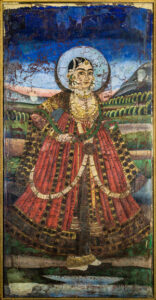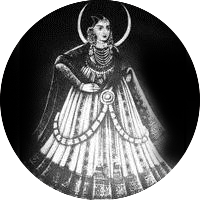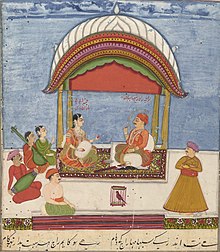She was courtesan, poet, dancer and adviser in the courts of both the first and second Nizams, much admired for her brains as well as for her beauty by the courtiers of the time.

“Yaa Ali iltija hain aapse — Deedar dikhaayein chanda ko — Ab taakat nahein intezaar ki.” (Oh Ali I beseech you — Show me your sign — I have no strength to wait).
These verses were penned by none other than the first poetess in the Deccan history to come up with a Dewaan (Compilation of poems) — Mahalaka Chanda Bai- fondly referred to as the Umrao Jaan of the Deccan Plateau whose historical mausoleum lies unobtrusively at the foothills of the Moula Ali Ki Dargah in Moula Ali. The title Mahalaka given by Nizam Ali Khan (Nizam-II) stands for “A Face like that of the moon.”

At the CIEFL campus there is a special ‘bawdi’ (well) dedicated to Mahalaka Chanda Bai where classical musicians and poets of 18th and 19th century used to perform concerts. The Tourism officials organised a couple of concerts in the bawdi. But apart from this, the estate and the Mausoleum located in the Moula Ali in which the poetess has been buried along with her mother Mehtaab is in a dilapidated state.
In 2010, the twin tombs were renovated with money from the US Ambassador’s fund for cultural preservation, but there has been no maintenance of the property since then. Houses, some illegal, have mushroomed all around and there is no space to park, should visitors desire to view this heritage structure. Locals though still pray at the old Chandabagh Masjid within the complex.
Mah Laqa Bai (also kno-wn as Mah Laqa Chanda) was a multifaceted personality in the courts of Nizam II and Nizam III and mesmerised kings and commoners of her era (1768-1824).

Chanda Bibi, later known as Mah Laqa Bai, learnt dance, music, and poetry and became the chief dancer at the court of Nizam II, patronised by the Nizam and his Prime Minister Aristu Jah.
She was the first female poet to write a full divan in Urdu. A full divan is a collection of ghazals with at least one poem rhyming with each letter of the Urdu alphabet (36 different letters). She was only 20 years old when Aristu Jah suggested she compile the divan. She added and revised the poems until her divan contained 125 ghazals.
Impressed by her performance at a court celebration in 1801, Nizam II raised Mah Laqa Bai to the nobility with a title befitting a royal courtesan, Mah Laqa Bai, or ‘Madame Moon-Cheek’.
He showered her with lands, grants and privileges including the right to travel in a palanquin with drummers to clear the streets, and 500 armed guards. She was given the Nizam’s Palace at Purani Haveli, in Nampally, which is now Osmania University, and the garden at Moula Ali.
His successor, the third Nizam, reaffirmed Mah Laqa Bai’s role as court dancer and noble adviser. His finance minister, Raja Chandu Lal, too admired Mah Laqa Bai and promoted her.

“She was a leading singer, dancer and poetess of her time and yielded a lot of influence. She was a staunch believer in Hazrat Ali and that is why she wanted to be buried under the Moula Ali ka dargah. It is quite unfortunate that despite our attempts the place has never been able to improve,” says Mrs Bilkis Aladin who is writing a book on the poetess.
Director for Department of Archaeology J. Kadreswari says, “She was the first poetess from the Deccan to compile poems and the present Osmania University land was hers at one point of time. We have to check out the place and work for its revival.” Mr Sajaad Shaheed of INTACH (Indian National Trust for Art and Cultural Heritage) says, “She was the first Saheb-e-Diwan which means she has written an anthology of poems.”
#KhabarLive #hydnews
